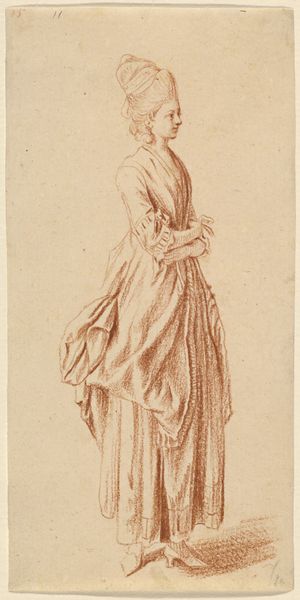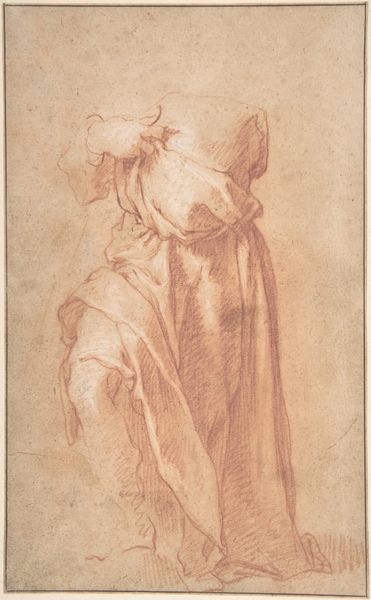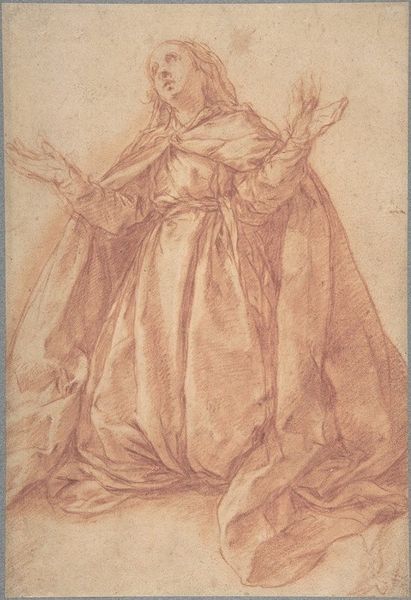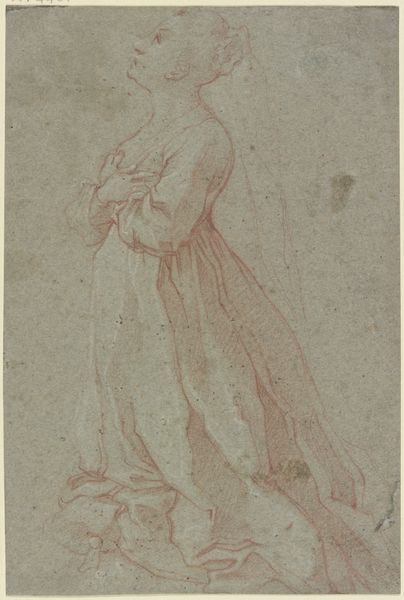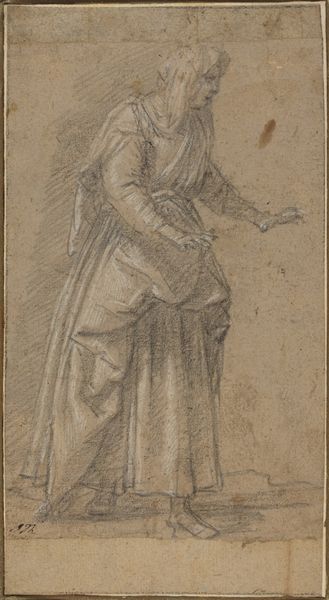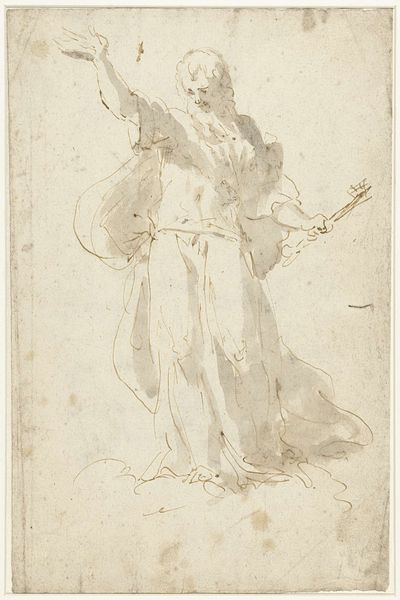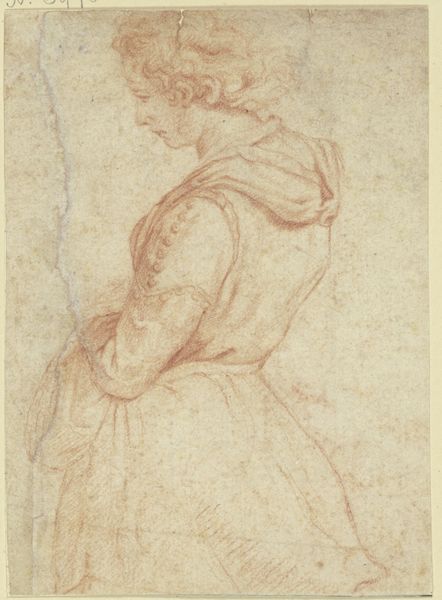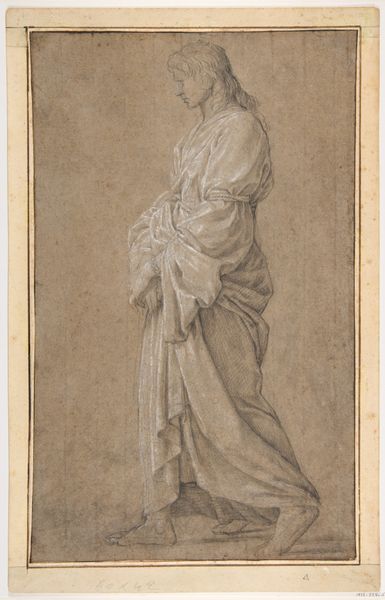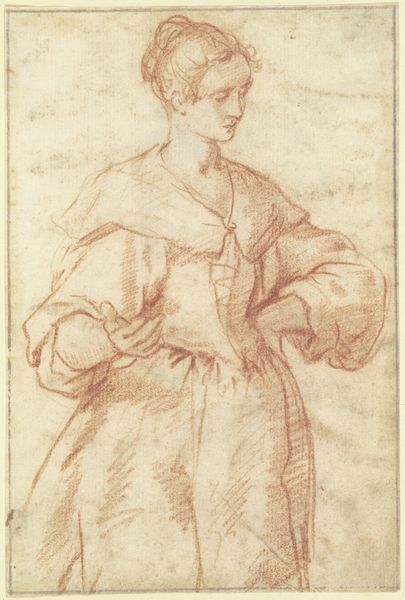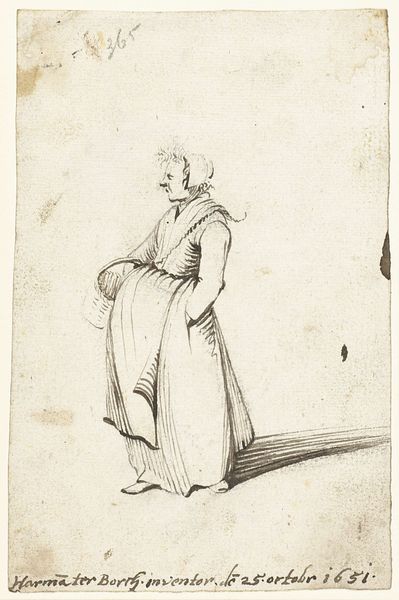
Die Heilige Theopista im Oratorio della SS. Trinità in Siena c. 1595 - 1602
0:00
0:00
drawing, red-chalk
#
portrait
#
drawing
#
red-chalk
#
mannerism
#
figuration
#
italian-renaissance
Copyright: Public Domain
Curator: Today we’re looking at a red chalk drawing by Ventura Salimbeni, depicting “Die Heilige Theopista im Oratorio della SS. Trinità in Siena,” created circa 1595 to 1602. It resides here at the Städel Museum. Editor: There's a serene elegance to the figure, isn't there? The soft hatching creates a gentle, flowing sense of form. Curator: Absolutely. Salimbeni, working within the late Mannerist style, often referenced historical events that supported counter-reformation and orthodox Catholic beliefs, perhaps informing the figure’s pious representation. This oratorio was founded under Siena's patronage. Editor: You can certainly sense a religious presence to her appearance. Observe the way the drapery wraps her, guiding our eyes across the plane; but it almost softens the severe effect it can otherwise produce, adding a hint of fragility to it. The consistent line work builds to create this illusion of delicate vulnerability. Curator: Given its creation around the turn of the 17th century, this drawing likely represents a preparatory study by Salimbeni for his frescoes inside the Oratorio della Santissima Trinità. Siena and other Italian territories were fraught with infighting, thus reinforcing ties to sacredness became vital to regional solidarity. Editor: I'm also noticing the lack of color. This is not merely a function of its medium, but it truly influences our perception of this drawing. It feels as if time itself is being alluded to and has faded her image, like an ancient memory being brought forth. The contours alone capture so much of her essence. Curator: Indeed. This type of red-chalk figural study served to reinforce specific aspects of Italian nation-building—Theopista, the figure referenced here, likely performed some key societal function or divine act of God to benefit that region during the height of Italian renaissance ideals and powers. It is her religious service that allows the cultural dialogue to be upheld even through present times. Editor: Thinking about how just the composition contributes to the reading of its time feels truly special here, doesn’t it? The figure and her story still emanate through this artwork so many years later. Curator: I agree. It is quite stunning when thinking about Salimbeni's dedication to solidifying orthodox histories within a growingly fragmented region.
Comments
No comments
Be the first to comment and join the conversation on the ultimate creative platform.
